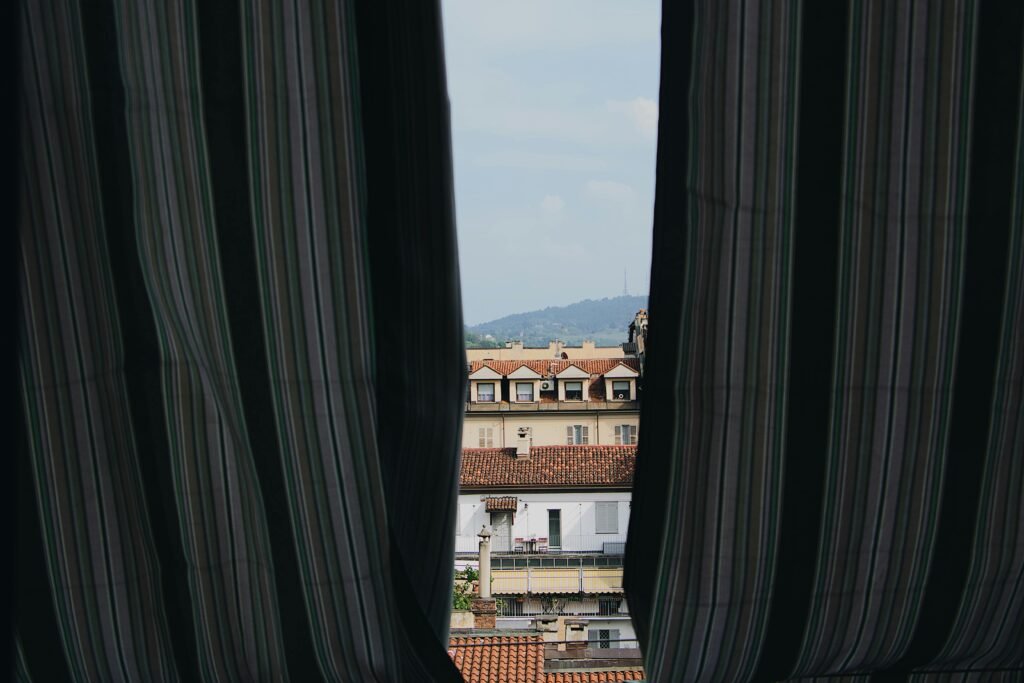Are you a beginner in the world of stage lighting and looking for some guidance to enhance your performances? Look no further! In this article, you will discover a collection of valuable stage lighting tips that will help you create an atmosphere that captivates and engages your audience. From understanding the different types of stage lights to learning how to effectively use color and angles, these tips will provide you with a solid foundation to unleash your creativity and elevate your performances to a whole new level. So, get ready to light up the stage with confidence and leave your audience in awe!
Lighting Basics
Stage lighting is a crucial element in any performance or event. It serves multiple purposes, including enhancing visibility, creating atmosphere, guiding the audience’s attention, and evoking emotions. Understanding the basic concepts of stage lighting is essential for creating a visually dynamic and impactful experience for both performers and viewers.
When it comes to stage lighting, there are various types of fixtures that can be used. Each type has its own unique qualities, including different beam angles, color temperature, and intensity. Common types of stage lighting fixtures include spotlights, floodlights, PAR cans, and moving lights. By using a combination of these fixtures, you can achieve a wide range of lighting effects and create different moods on stage.
Color is another important aspect of stage lighting. It can dramatically change the look and feel of a performance. Color can be used to signify different emotions, highlight specific moments, or differentiate between scenes. Commonly used color filters, also known as gels, can be placed in front of the light fixtures to create a desired hue. Experimenting with different color combinations can enhance the overall visual impact and help tell the story on stage.
Preparing the Lighting Design
Before setting up the lighting equipment, it is crucial to thoroughly research the venue and understand the stage layout. Take note of any architectural features, potential obstacles, or limitations that may affect the lighting design. Knowing the dimensions of the stage, the height of the ceiling, and the availability of power outlets is important in designing an effective lighting setup.
Collaboration with the production team is key to a successful lighting design. Discussing the overall vision, theme, and requirements of the performance will help ensure that the lighting design aligns with the artistic direction. Communicating with the director, choreographer, set designer, and other key stakeholders will allow you to create a cohesive and unified experience.
Creating a lighting plot is an essential step in the preparation process. A lighting plot is a detailed plan that indicates the positioning of each lighting fixture, along with any required accessories, such as stands or trusses. It also includes information about the color, intensity, and focus of each light. Developing a lighting plot helps ensure that the lighting design is consistent, efficient, and supports the intended atmosphere for each scene of the performance.

Setting Up the Lighting Equipment
Once you have completed the necessary preparation, it’s time to set up the lighting equipment. Ensuring proper power supply and safety measures is of utmost importance. Make sure to follow local electrical codes and guidelines to prevent any accidents or equipment damage. Test all electrical connections, cables, and fixtures to ensure everything is functioning properly before proceeding further.
Positioning and mounting the lighting fixtures requires careful consideration. Experiment with different angles and distances to achieve the desired lighting effects. Consider the height and weight of the fixtures to ensure they are safely secured. Whether using floor-mounted stands, hanging the lights from a grid, or utilizing trusses, always follow the manufacturer’s instructions for proper installation.
After positioning the fixtures, it’s time to connect and test the lighting system. Use the appropriate cables and connectors to connect the fixtures to the lighting console or dimmer rack. Properly address each fixture, assigning unique identification numbers or labels for easy control. Test each fixture individually to ensure they respond to the commands from the console. Check the focus, intensity, and color output of each light to ensure they align with the lighting design.
Creating a Lighting Atmosphere
To create a captivating performance, it is important to understand the moods and emotions that the performance intends to convey. Pay attention to the music, dialogue, choreography, or props to get a sense of the desired atmosphere. Experiment with various lighting techniques to evoke different emotions and enhance the overall experience for the audience.
Different lighting techniques can be used to enhance the atmosphere on stage. For example, using front lighting, which illuminates the performers from the front, can help ensure their faces are clearly visible to the audience. Backlighting and silhouetting can create dramatic and mysterious effects, while side and cross lighting can add depth and dimension to the stage. By combining these techniques and adjusting the intensity and focus of the lights, dynamic and visually interesting scenes can be created.
Balancing the intensity and focus of the lights is crucial in creating a harmonious lighting design. Avoid overly bright or dark areas on stage by properly adjusting the light levels. Use different lighting intensities to guide the audience’s attention to specific areas or performers. Experiment with different focus settings to highlight or obscure certain elements of the performance. Continuously evaluate the lighting design during rehearsals and adjust as needed to achieve the desired atmosphere and visual impact.

Controlling the Lighting Effects
To control the lighting effects, a lighting console and dimmers are essential tools. A lighting console allows you to control the intensity, color, and positioning of each fixture individually or in groups. Programming cues and presets allows you to automate complex lighting changes, saving time and ensuring consistency during performances. Familiarize yourself with the features and capabilities of the lighting console to optimize your control over the lighting design.
During live performances, it is important to be able to adjust the lights on the fly. Pay attention to the performers’ movements, timing, and energy to make adjustments in real-time. Use the lighting console’s faders, buttons, or touch screens to make subtle or dramatic lighting changes. Be attentive to the cues and instructions from the director or stage manager to ensure the lighting supports the overall flow of the performance.
Understanding Light Colors and Filters
When it comes to stage lighting, color plays a significant role in setting the mood and enhancing the visual impact. Choosing the right color temperature for the stage is crucial. Different color temperatures, measured in Kelvin, can create different atmospheres. Warm color temperatures, around 2500K to 3200K, evoke a cozy and intimate feel, while cool color temperatures, around 6000K to 7000K, create a crisp and bright ambience. Experiment with different color temperatures to find the most suitable one for each scene.
Color gels and filters are commonly used to modify the color of the light emitted by fixtures. Color gels are thin sheets of colored plastic that can be placed in front of the light source to create the desired color effect. They come in a wide range of colors and densities, allowing you to achieve various hues and intensities. Filters, on the other hand, can be used to control the amount of light passing through the fixture, adjusting its intensity or diffusion. Experiment with different color combinations and filters to create visually stunning and expressive scenes.
Mixing and layering colors can also produce dynamic lighting effects. By combining lights with different colors and intensities, you can create a vibrant and textured visual experience. Experiment with different color combinations to evoke different emotions or to represent different environments. Layering colors onto performers or backdrops can add depth and dimension to the stage. Continuously evaluate the color combinations and adjust as needed to achieve the desired visual impact.

Lighting Techniques and Positions
Front lighting is a widely used technique that ensures performers are clearly visible to the audience. Placing lights in front of the performers’ faces helps illuminate their features and expressions, allowing the audience to see them clearly. Front lighting is often used as a base lighting technique and can be supplemented with other techniques for added effects.
Backlighting and silhouetting can create dramatic and visually striking effects. Placing lights behind performers, pointing towards the audience, can create silhouettes and outline the performers’ figures. This technique is particularly effective in creating mystery or highlighting certain elements of the performance.
Side and cross lighting are techniques that add depth and dimension to the stage. By placing lights at an angle from the sides, you can create interesting shadows and highlights on the performers and set pieces. Cross lighting, which involves placing lights at a diagonal angle from opposite sides, can add texture and complexity to the lighting design. Experiment with different lighting angles and positions to create visually engaging scenes.
Designing a Lighting Plot
Designing a lighting plot involves creating a detailed plan for the lighting setup. Consider the specific scenes, performers, and transitions within the performance when positioning the lights. Identify the key moments or areas that require special attention and adjust the lighting accordingly. Collaborate with the production team to ensure the lighting plot aligns with the overall vision and supports the dynamics of the performance.
Positioning lights for specific scenes and performers is crucial in creating impactful lighting. Identify the focal points, such as the lead performer or a key prop, and ensure they are properly lit. Experiment with different lighting angles, distances, and heights to achieve the desired lighting effects. Pay attention to the transitions between scenes and consider how the lighting can enhance the flow and narrative of the performance.
Considering the transitions and dynamics of the performance is important in developing a coherent and engaging lighting plot. Understand the pacing, energy, and emotions of each scene and adjust the lighting accordingly. Use different lighting techniques and intensities to create contrast and convey the story on stage. Continuously evaluate the lighting plot during rehearsals and make adjustments as needed to achieve the desired visual impact and support the overall performance.

Troubleshooting Common Lighting Issues
Flickering or uneven lighting can be caused by various factors, such as faulty electrical connections, aging lamps, or improperly secured fixtures. Regularly inspect and maintain the lighting equipment to prevent these issues. Check the electrical connections, replace any worn-out lamps, and ensure that the fixtures are securely mounted. If flickering or uneven lighting occurs during a live show, have backup fixtures or spare lamps readily available to quickly replace any malfunctioning equipment.
Technical difficulties can sometimes occur during live performances. Power outages, console malfunctions, or equipment failures can disrupt the lighting design. It is important to remain calm and composed in such situations. Communicate with the production team and stage crew to address the issue as quickly as possible. Have backup plans and contingency measures in place to mitigate potential disruptions. Familiarize yourself with the technical aspects of the lighting equipment and the proper troubleshooting procedures to quickly resolve any issues that may arise.
Adapting to unexpected changes in the performance is a skill that lighting technicians must possess. Last-minute changes in blocking, script revisions, or improvisations by performers can require adjustments to the lighting design. Stay flexible and communicate with the production team to determine the best course of action. Make the necessary modifications to the lighting plot and be prepared to adapt in real-time to ensure a seamless and visually appealing performance.
Continuous Learning and Experimentation
Stage lighting technology is constantly evolving, and it is important to stay updated with the latest advancements. Stay informed about new lighting fixtures, control consoles, and techniques by actively engaging in industry forums, following reputable online publications, and attending trade shows. By staying current with the latest technology, you can expand your creative possibilities and deliver cutting-edge lighting designs.
Attending workshops and training sessions can greatly enhance your knowledge and skills in stage lighting. These opportunities provide hands-on experience, allowing you to learn new techniques, gain insights from industry professionals, and network with other lighting enthusiasts. Take advantage of these learning opportunities to expand your knowledge and stay ahead of the curve.
Don’t be afraid to experiment and explore new creative possibilities with lighting. Step outside your comfort zone and try new techniques, color combinations, or lighting effects. Embrace the spirit of curiosity and innovation to push the boundaries of your lighting design. Learn from your experiments and continuously refine your craft to deliver truly exceptional and captivating lighting experiences.
In conclusion, stage lighting is an art form that requires a deep understanding of the purpose of lighting, different types of fixtures, and the importance of color. Preparing a lighting design involves thorough research, collaboration with the production team, and creating a detailed lighting plot. Setting up the lighting equipment requires ensuring proper power supply, positioning the fixtures, and testing the system. Creating a lighting atmosphere involves understanding the emotions of the performance, using different techniques, and balancing the intensity and focus of the lights. Controlling the lighting effects is achieved through the use of lighting consoles, programming cues, and making real-time adjustments during live performances. Understanding light colors and filters allows for the creation of dynamic effects by choosing the right color temperature, exploring gels and filters, and mixing and layering colors. Lighting techniques and positions, such as front lighting, backlighting, and side lighting, add dimension and impact to the stage. Designing a lighting plot involves considering specific scenes, performers, and transitions, and monitoring the dynamics of the performance. Troubleshooting common lighting issues requires addressing flickering or uneven lighting, handling technical difficulties, and adapting to unexpected changes. Continuous learning and experimentation ensure staying updated with advancements, attending workshops and training sessions, and exploring new creative possibilities. By following these stage lighting tips, you can create visually stunning and immersive experiences for performers and audiences alike.



